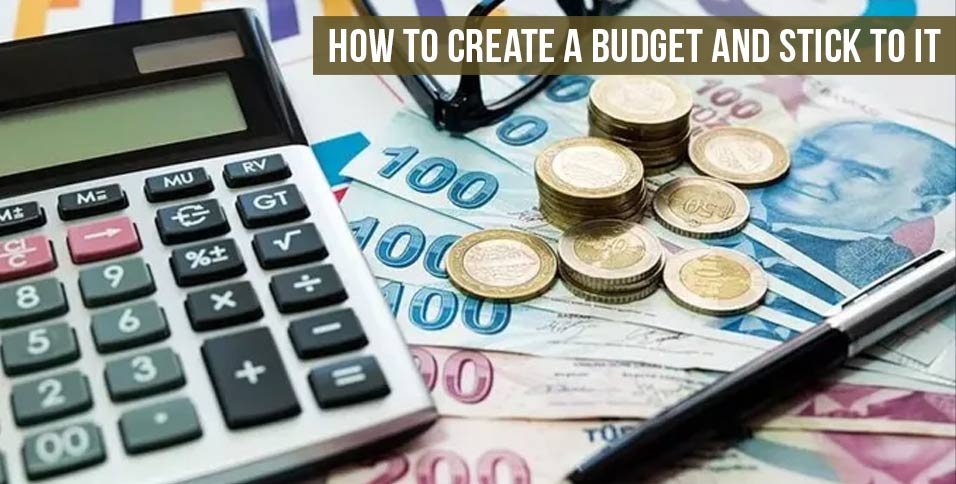One of the best strategies to manage your money and reach your financial objectives is to make and follow a budget. A carefully considered budget can be your road map to financial success, whether you’re saving for a home, making retirement plans, or just attempting to better manage your expenditures. We’ll take you through the process of creating an Australian-specific budget in this tutorial, along with helpful advice on how to follow it.
Recognizing the Value of Budgeting
Budgeting is about taking charge of your financial circumstances, not only about limiting your expenditures. You may allocate dollars towards your financial priorities, find areas where you can make savings, and monitor where your money is going by making a budget. Making the most of your hard-earned money requires maintaining a budget, especially in Australia where living expenses might be expensive.
First, evaluate your financial status.
Getting a clear view of your existing financial status is the first step in making a budget. This entails being aware of your earnings, outlays, and outstanding debts. First, collect all of your financial records, such as bills, bank statements, and pay stubs. Your money inflows and outflows will be fully visible to you as a result.
Revenue
Enumerate all of your revenue sources, such as your government benefits, rental income, freelancing or side gig earnings, and your wage. For a more realistic picture of your monthly budget, make sure to use your net income (after taxes).
Costs
Next, divide your spending into two primary categories: variable and fixed. Rent or mortgage payments, utilities, and insurance premiums are examples of fixed expenses that don’t change much every month. On the other hand, variable expenses, which include things like groceries, entertainment, and eating out, might change from month to month.
Debts
List all of your current debts, including credit card balances, student loans, and personal loans. Prioritizing your debt repayment plan will be made easier if you are aware of the interest rates and minimum payments associated with each obligation.
Step 2: Establish Specific Financial Objectives
It’s crucial to establish specific financial objectives before you begin allocating dollars in your budget. Your spending and saving decisions will be guided by these objectives, which will also keep you inspired to stay within your spending limit. Your financial objectives may consist of:
- Saving money for a down payment on a home
- Resolving credit card debt
- Putting money aside for emergencies
- Retirement savings
- Paying for a vacation or other personal objectives
If your goal is saving for a down payment on a home in Hobart, consider consulting with a mortgage broker Hobart to explore your financing options and get pre-approved for a loan. Make sure your goals are SMART when you set them: Time-bound, relevant, quantifiable, achievable, and specific. For instance, instead of setting a general objective like “save more money,” try setting a more specific one like “save $10,000 for a house deposit within the next two years.”
Create Your Budget in Step Three
It’s time to make your budget now that you have a clear picture of your financial status and objectives. Before allocating dollars to each spending area, make a list of all your sources of revenue. You can employ a variety of budgeting techniques, but the 50/30/20 rule is a well-liked strategy.
The Rule of 50/30/20
According to this guideline, you should divide your income as follows:
- Fifty per cent goes for basics, such as housing, utilities, groceries, etc.
- 30% goes into discretionary spending, which includes hobbies, dining out, and entertainment.
- 20% for debt repayment and savings
This approach to budgeting offers a balanced way to make sure you’re meeting your basic needs and moving closer to your financial objectives.
Adapting Your Budget
The 50/30/20 guideline is an excellent place to start, but depending on your unique situation, you might need to change the numbers. For instance, you might have to set aside more than half of your salary for needs if you reside in a high-cost city like Sydney or Melbourne. Finding a balance that suits you and enables you to reach your financial objectives is crucial.
Step 4: Monitor Your Expenses
Making a budget is just the first step; following it is the true problem. Monitoring your spending is one of the best strategies to keep on course. Simple spreadsheets or more sophisticated budgeting applications like Pocketbook or YNAB (You Need A Budget) can be used for this.
Making Use of Apps for Budgeting
Apps for budgeting can alter everything. when it comes to money management. These applications automatically track transactions and classify your spending by connecting to your credit cards and bank accounts. Additionally, they offer thorough reports and visualizations that make it simple to see where your money is going and pinpoint areas where you may make savings.
Tracking by Hand
You can track your spending with a spreadsheet if you’d rather take a more active approach. Just make a table with columns for every category of expenses and keep track of your transactions as they happen. Although it takes more self-control, this approach can be equally as successful as utilizing an app.
Step 5: Regularly review and modify your budget.
Your priorities and financial status may vary over time, so it’s critical to periodically examine and modify your budget. To make sure your budget still reflects your current financial status and is in line with your goals, try to review it at least once a month.
Finding Opportunities for Improvement
Look for places where you can save more money or reduce your expenditure during your monthly assessment. For instance, if you discover that you frequently spend too much on eating out, think about creating a more sensible spending plan for that category or figuring out how to prepare more meals at home.
Honouring Your Achievements
Along the road, remember to acknowledge and appreciate your accomplishments. Recognizing your accomplishments will help you stay motivated and dedicated to your budget, regardless of whether you’ve paid off a significant amount of debt or achieved a savings milestone.
Advice for Maintaining Your Budget
Setting up a budget is one thing, but maintaining it can be difficult. The following useful advice can help you keep on course:
Create an Emergency Fund
Even the best-laid budgets can be derailed by unforeseen costs. Aim to accumulate an emergency fund that is sufficient to cover three to six months’ worth of living expenses to safeguard yourself against unforeseen financial difficulties. A high-interest savings account, for example, should make this money conveniently available.
Automate Your Savings
Automating the process is one of the simplest ways to be sure you’re saving money. Establish automatic transfers to your investment or savings accounts from your checking account. Automating your savings reduces the likelihood that you will overlook or forget to make a deposit.
Make Debt Repayment a Priority
Prioritize paying off high-interest debt as soon as you can, such as credit card amounts. To lower the total amount of interest you pay over time, concentrate on making larger monthly payments than the minimum. Alternatively, consider investing in physical gold or silver from a reputable bullion store to diversify your financial portfolio and hedge against inflation.
Make Discretionary Purchases with Cash
You may stick to your spending plan by using cash for discretionary purchases. Compared to using a credit card, paying with cash makes you more conscious of your spending and reduces the likelihood that you will overspend.
Steer clear of impulsive purchases.
Impulsive purchases have the potential to swiftly accumulate and derail your budget. Think about if you really need the item or if it’s merely a passing fancy before making a non-essential buy. You may make more thoughtful spending choices by instituting a 24-hour waiting time for non-essential purchases.
Remain Responsible
Ask a family member or trusted friend to help you stay accountable by sharing your budgeting objectives with them. Additional encouragement and support can be obtained by often checking in with someone aware of your financial objectives.
In conclusion
One of the most effective ways to take charge of your money and reach your financial objectives is to make and follow a budget. You may make a budget that suits you and cultivate the self-discipline to stick to it by following the instructions in this article. Keep in mind that there is no one-size-fits-all solution when it comes to budgeting, so be ready to modify your strategy as necessary. You and your family can have a better financial future if you are patient, persistent, and dedicated to financial wellness.
Having a well-structured budget is more crucial than ever in the Australian setting, where financial strains can be severe. You may allocate your resources wisely by being aware of your financial status, establishing specific objectives, and keeping track of your expenditures. Therefore, begin your path to financial independence by taking the first step right now. Your future self will be appreciative.
Also Read: Top 5 Clothing Brands in the USA for Budget-Friendly Fashion





















